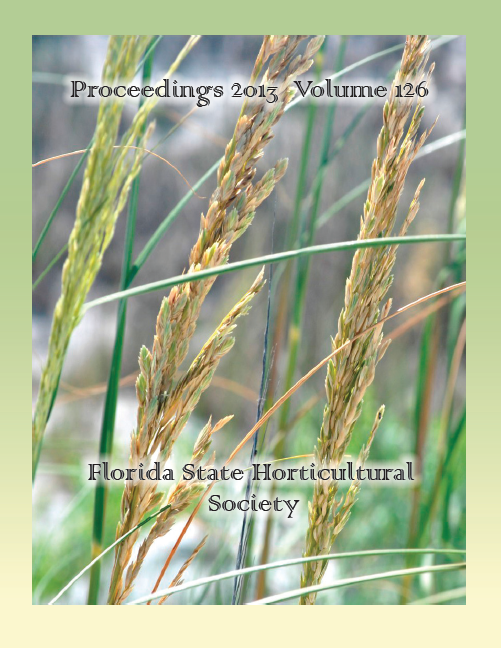Abstract
Most of the strawberry (Fragaria ×ananassa) production area in Florida is planted with bare-root transplants, which are relatively inexpensive and provide high yields. High water volumes are needed for bare-root transplant establishment: Approximately 600,000 gal/acre per season with only 3% efficiency. Plug (containerized) transplants can be established with no overhead watering, being an alternative to traditional bare-root transplants. However, plug transplants used in Florida are mostly imported from Canada and California and cost twice as much as bare-root transplants. Research was conducted to evaluate the feasibility of producing strawberry plug transplants under Florida conditions. Treatments consisted of: a) 4-week-old plug transplants, b) 4-week-old plug transplants dipped into indole-3-butyric acid (IBA) at 0.10% v/v, c) 6-week-old plug transplants, d) 6-week-old plug transplants dipped into IBA, and e) bare-root transplants. Results showed no total fruit weight difference between bare-root transplants and Florida-produced 6-week-old plug transplants. These results demonstrated that there is potential for Florida growers to use locally-produced plug transplants, leading to reduced production costs and water use during transplant establishment.

